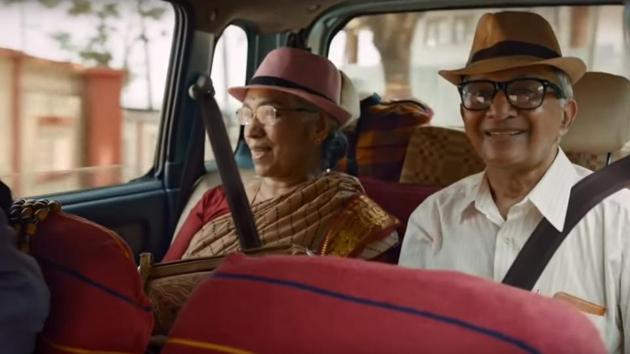Using older models by Vodafone is really smart advertising
The telecom company’s new campaign featuring a real-life couple is classic slice-of-life advertising with a dash of aspiration and perfection thrown into the mix for good effect
As someone who began his career in advertising, I know one shouldn’t read too much into ad campaigns. Still, I can’t resist commenting on the latest advertising campaign for Vodafone India, the one the company is airing during the Indian Premier League (IPL) – yes, the popular Twenty20 cricket league has become significant enough for companies to launch special ad campaigns around it. Readers who’ve been watching IPL know what I am referring to; the series of ads featuring a couple enjoying their second honeymoon in Goa.

The campaign is well made, starting with the choice of the couple. For those who don’t know (and most don’t), the couple is a real-life one – the Dhananjayans from Chennai. Both are legendary dancers. I know this because I grew up in Chennai and have seen them perform. A minor digression here: I know Amy Chua made Chinese mothers look pushy in her Battle Hymn of the Tiger Mother, but they come a poor second to Tam-brahm (short for Tamilian Brahmin) mothers. Back in the 1970s and the 1980s, when I was growing up in Chennai, Tam-brahm mothers wanted their children to be either doctors or engineers (nothing else would do). I remember being yelled at once because I came third in class (not third class; third in class). If you were a boy, you had to learn the violin or the mridangam (I learnt the violin, for around 13 years). If you were a girl, you had to learn to sing or dance. My sister learnt Bharatanatyam. Part of the drill was attending concerts, which, in hindsight, wasn’t all that bad (although it seemed a drag back then). And so, I’ve seen the Dhananjayans perform. Of course, they were a lot younger than they are in the ads. Shucks, even I was a lot younger then. But, as I said at the beginning, I digress.
Part of the appeal of the campaign is also that the old couple are very cool – the husband gets a tattoo; the wife goes parasailing – and who doesn’t like the idea of cool parents, or grandparents? Most of our parents (or grandparents) aren’t cool. One of my grandfathers (alas, now departed), was uber-cool, but that’s not a story for a family newspaper such as this one. But we understand the appeal of cool parents or grandparents.
There’s also something endearing about old people, especially ones as cool as those in the ad, who are happy to do adventurous things such as getting a tattoo (without worrying about the needle or the hygiene of the tattoo artist) or para-sailing (without complaining about aches and pains in three different and widespread joints).
This is classic slice-of-life advertising (as it’s called) with a dash of aspiration and perfection thrown into the mix for good effect. I can actually visualise the family -- the old (and cool) couple in Besant Nagar (Chennai); the son in Koramangala (Bengaluru), and the grand-daughter and grandson in San Jose and London respectively.
The campaign is also a departure of sorts for Vodafone, which has previously used the infamous Zoozoos (they were cute to begin with, but I think the company and the agency forgot to look at the best-by date) around the IPL, and the endearing pug. The second one, showing a pug faithfully and obediently following in the steps of a small boy was especially appealing to me -- I’ve had dogs all my life, and, with the exception of one, have had to run after most. Come to think of it, that pretty much sums up my relationship with my cellular service provider.
The most interesting thing about the campaign is that it seems to signal a desire by Vodafone to move towards older customers who will probably pay more. It is unlikely that the old couple will appeal to anyone under the age of 30. That’s not a bad idea. Most telcos are either giving things away for free, or obsessed about appealing to the young. Neither is a particularly lucrative option. In contrast, appealing to an older age-group willing to pay more is definitely a more attractive one. The Vodafone campaign will likely appeal most to upper-middle class households in urban areas – even more slicing and dicing (marketers call this segmentation) that makes the business model even more appealing, although it does narrow the market significantly.
That’s probably too much of an analysis of an ad campaign. It’s probably best to just enjoy the antics of the Dhananjayans (or the Balakrishnans, as they are called in the campaign), at face value.
R Sukumar is editor, Mint
letters@hindustantimes.com





